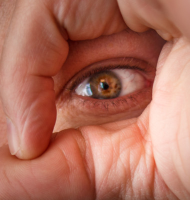Thing is, these are solved problems, with solution echoes going back thirty to forty years (first GUI systems being on LISA and early Mac machines from 1984) and analog systems before that. It seems simple to simplify and turn something into a graphic, until you have to make sure everyone else understands it too. And then you have to look at reverse contrast, issues with transposition, different resolutions... So, I mean - were these complaints from people prior to this, that the symbols were not comprehensible, or were these just... boredom from staring at them too long? Edited to add: To be sure, the people to look to for graphic simplification are ASCII and pixel art folks. They're used to fooling the eye into seeing something, and could have identified early the problem with the plus-signs-and-blob not looking like the "book" it was supposed to represent. Edited a second time to add: This particular change isn't so much "who moved my cheese" rather "what improvements were gained?" You can do A-B testing on something like this to objectively measure success ratios, and I think you'd find that: Nobody will correctly identify the puzzle-piece-and-gear as being "yeah, that's for rollable tables, and small trigger-able macros." The jukebox is way too busy, and likely people would think that was a master audio tab, for volume of chat or chat settings, not a music list or music tab with sound file controls and import. People would struggle to discern what the blob-with-plusses is. "Mapmaking?" "Adding things?" "Starfield, so, like, the map layer maybe?" People may think the palette-and-brush is for the drawing tools, not for a library of static images. You are depicting tools, not, say, a framed finished image, which more accurately would reflect what is under that tab. Only the speech and gear, which changed the least, retain any recognizability. Word balloons are recognized as speech or, these, days, texting - and the squared off ones honestly more accurately reflect this. The gear changed slightly, but, predictably is for settings, still. It's a grab-bag of miscellany, which is what people expect. I wanted to provide a more directed criticism than what sounds like I'm upset that things changed. Things change, but usually they do so in response to some force that directs them to, and in a direction that the force would indicate. I'm not sure what force blew them this direction, but it doesn't appear to be in the direction of usability or recognition.

























